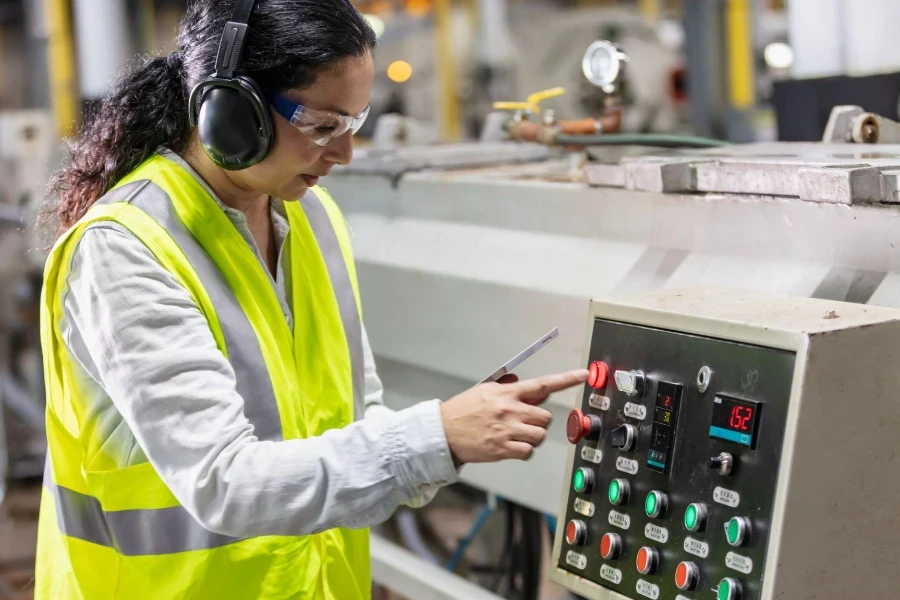In an era where technology evolves at an unprecedented pace, industries are constantly seeking innovative ways to enhance efficiency, reduce costs, and improve product quality. Smart manufacturing emerges as a beacon of industrial evolution, integrating advanced technologies to create highly intelligent and automated production processes. This article aims to demystify smart manufacturing, exploring its core components, benefits, challenges, future trends, and implementation strategies. By breaking down these complex concepts into digestible explanations, we provide a clear understanding of how smart manufacturing is revolutionizing industries worldwide.
Table of Contents:
– What is smart manufacturing?
– Key components of smart manufacturing
– The benefits of adopting smart manufacturing
– Challenges in implementing smart manufacturing
– Future trends in smart manufacturing
What is smart manufacturing?

Smart manufacturing leverages the power of advanced technologies to create an interconnected and optimized production environment. It involves the use of Internet of Things (IoT) devices, artificial intelligence (AI), machine learning, and big data analytics to enhance manufacturing processes. This section delves into the definition of smart manufacturing, highlighting its significance in today’s industrial landscape.
The essence of smart manufacturing lies in its ability to connect every aspect of the production process. From supply chain management to the factory floor, smart manufacturing enables real-time monitoring and control. This connectivity ensures that decision-makers have access to accurate and up-to-date information, allowing for more informed decisions and agile responses to market demands.
At its core, smart manufacturing is about achieving unparalleled efficiency and flexibility. By automating routine tasks and optimizing production workflows, manufacturers can significantly reduce waste, minimize downtime, and adapt quickly to changes in production requirements. This dynamic approach to manufacturing not only boosts productivity but also enhances product quality and sustainability.
Key components of smart manufacturing

Smart manufacturing is built on a foundation of cutting-edge technologies and systems. This section outlines the key components that constitute a smart manufacturing ecosystem, including IoT devices, AI and machine learning, big data analytics, and cyber-physical systems.
IoT devices play a crucial role in smart manufacturing, providing the sensory network needed to collect vast amounts of data from the production environment. These devices monitor various parameters, such as temperature, humidity, and equipment status, enabling real-time visibility into the manufacturing process.
AI and machine learning algorithms analyze the data collected by IoT devices, identifying patterns and predicting outcomes. This predictive capability allows manufacturers to anticipate equipment failures, optimize maintenance schedules, and improve production planning.
Big data analytics further enhances decision-making by processing and interpreting the large volumes of data generated by smart manufacturing systems. Through advanced analytics, manufacturers can uncover insights into production efficiency, product quality, and supply chain performance.
The benefits of adopting smart manufacturing

Adopting smart manufacturing offers a multitude of benefits, from increased operational efficiency to enhanced product quality. This section explores the tangible advantages that manufacturers can gain by embracing smart manufacturing practices.
One of the most significant benefits is the dramatic improvement in operational efficiency. Smart manufacturing enables continuous monitoring and optimization of production processes, leading to reduced downtime, lower energy consumption, and minimized waste.
Moreover, smart manufacturing enhances product quality by providing greater control over production variables. Real-time monitoring and automated adjustments ensure that products meet stringent quality standards, reducing the rate of defects and rework.
Additionally, smart manufacturing fosters innovation by facilitating the development of new products and processes. The ability to rapidly prototype, test, and iterate in a highly flexible production environment accelerates the pace of innovation, enabling manufacturers to stay competitive in a rapidly changing market.
Challenges in implementing smart manufacturing

While the benefits of smart manufacturing are compelling, its implementation is not without challenges. This section addresses the common obstacles manufacturers face when transitioning to smart manufacturing, including technological complexity, cybersecurity risks, and workforce development.
The integration of advanced technologies requires significant investment in both hardware and software, as well as the expertise to deploy and manage these systems. Manufacturers must navigate the technological complexity of smart manufacturing, ensuring compatibility and interoperability among various components.
Cybersecurity emerges as a critical concern, as the interconnected nature of smart manufacturing systems increases vulnerability to cyber attacks. Protecting sensitive data and ensuring the integrity of manufacturing operations is paramount.
Furthermore, the shift to smart manufacturing necessitates a skilled workforce capable of operating and maintaining sophisticated technologies. Manufacturers must invest in training and development programs to equip their employees with the necessary skills and knowledge.
Future trends in smart manufacturing

As smart manufacturing continues to evolve, several trends are shaping its future. This section highlights the emerging technologies and practices that will influence the trajectory of smart manufacturing, including digital twins, sustainable manufacturing, and collaborative robots.
Digital twins, virtual replicas of physical assets, are becoming increasingly important for optimizing production processes and product design. By simulating real-world conditions, manufacturers can test and refine their operations in a virtual environment, reducing the need for costly physical prototypes.
Sustainable manufacturing gains momentum as environmental concerns drive the demand for eco-friendly production methods. Smart manufacturing plays a crucial role in achieving sustainability goals, enabling more efficient use of resources and reducing environmental impact.
Collaborative robots, or cobots, designed to work alongside human operators, enhance flexibility and safety in the manufacturing environment. These robots are equipped with advanced sensors and AI, allowing them to adapt to changing tasks and work conditions.
Conclusion
Smart manufacturing represents a transformative approach to industrial production, harnessing the power of technology to create more efficient, flexible, and sustainable manufacturing processes. While challenges exist, the potential benefits of smart manufacturing make it an essential strategy for manufacturers aiming to thrive in the competitive global marketplace. As technology continues to advance, the future of smart manufacturing looks promising, with innovations such as digital twins, sustainable manufacturing, and collaborative robots leading the way towards a smarter, more connected manufacturing landscape.”



